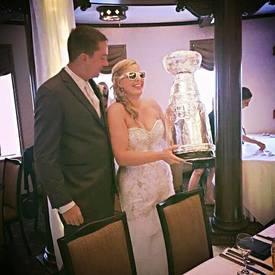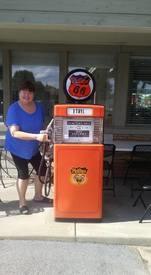Knee Pain after Running Outside

saracatherine89
Posts: 291 Member
Does anyone else have hardcore knee pain when running outside?
I exercise almost daily, and it is often high impact. I try to run 20+ miles a week on the treadmill, and for days where I am not feeling like running or run a short distance, I will often add one of my Jillian Michaels or TurboFire DVDS for added circuit/strength training and cardio. For those not familiar with those DVDs, they contain a lot of plyometric/jump moves as well as squats and lunges, so one can imagine that all of that would be hell on my knees. Those haven't seemed to really impact me at all, but I feel like whenever I run outside my knees are KILLING ME the next few days. I usually don't like to run outside, especially when it is hot out, but since the weather has cooled down I have been trying to run outside once or twice a week, and every time I do my knees start to crack a lot and get really achy a day or two after. I can work out 6 days a week and do my insanity videos with no knee problems at all, but this week I ran outside 2 days and have had to take the next day off because my knees hurt too bad. Is that just the nature of running outside, or is there something I can change, like my shoes/wearing a brace/my running style?
I exercise almost daily, and it is often high impact. I try to run 20+ miles a week on the treadmill, and for days where I am not feeling like running or run a short distance, I will often add one of my Jillian Michaels or TurboFire DVDS for added circuit/strength training and cardio. For those not familiar with those DVDs, they contain a lot of plyometric/jump moves as well as squats and lunges, so one can imagine that all of that would be hell on my knees. Those haven't seemed to really impact me at all, but I feel like whenever I run outside my knees are KILLING ME the next few days. I usually don't like to run outside, especially when it is hot out, but since the weather has cooled down I have been trying to run outside once or twice a week, and every time I do my knees start to crack a lot and get really achy a day or two after. I can work out 6 days a week and do my insanity videos with no knee problems at all, but this week I ran outside 2 days and have had to take the next day off because my knees hurt too bad. Is that just the nature of running outside, or is there something I can change, like my shoes/wearing a brace/my running style?
0
Replies
-
I do lots of squats as well but they actually helped with the knee problems. Also changing my shoes made a big difference! Try running with different ones when you are out..0
-
I have bad knees and have been able to do pretty much anything in the gym from kickboxing and step aerobics to squatting 85 lbs (currently, but not for long), but one thing that I have been told by my doctor many times is how horrible walking on pavement is for the knees and running can only be that much worse. Can you run on grass or gravel when you're outside? That's what was suggested to me.0
-
What surface are you running on? It makes a big difference. If you go from the cushion of the treadmill to the sidewalk (the absolute hardest, worst surface to run on), you are going to be a lot more sore from it.0
-
i have the exact same problem...have you tried glucosamine supplements?? i'm finding them quite good (only taking them 2 weeks) so far...i also changed my shoes to ones that have gel inserts in them and thats helped too!!0
-
I'm having exactly the same problem- I started training for a 15km, and some days the pain was so bad the day after a long run I thought I had done permanant damage! I've bought new shoes, cut right back to 30 minute runs, and will slowly build up again. I am taking glucosamine, although I was told with proper shoes and not overdoing they aren't necessary. I really don't think they help at all.
I also found wearing a strap after my last run seemed to help the pain.
If you are able, hit up a running shop and have your running style assessed. Unfortunately that isn't an option for me- I'm living in Turkey.
You definitely want proper shoes though!0 -
Get fitted for running shoes. The right shoe makes all the difference.0
-
Hey There!
A couple of things... I am not a doctor but I've been coaching beginning runners for years and have a fair amount of "lay" experience in physio therapy and sports injuries (both my own and others)
Can you describe the knee pain?
one knee? or both? above the knee? below the knee? inside\outside of knee? does the pain radiates? is it a sharp or dull pain? How would you rate the pain on a scale of 1 - 10 (10 being unbearable)
The knee is a complex joint with numerous muscles and tendons that work in tandem to give us motion. Defining the pain provides a better chance at a helping us help you.
Also... how old are your shoes and were you professionally fitted? Cushioning in shoes breaks down between 500-800 Km. (300-500 miles). The outer on the shoe may look completely new, but once the cushioning has broken down you will start to feel it in your joints (ankles/knees/hips) as the shoe can no longer support the activity.
As well, most people fall into one of three different types of shoes neutral, stability or motion control. We need to wear the shoes that work for the kind of gait we have. If you were not professionally fitted, I would go to a good running store (Fleet Feet/Running Room/ etc) and have them assess your gait. Bring along your current running shoes so that they can look at the wear patterns as well. They will tell you based on a gait assessment whether you suppinate, pronate or overpronate and direct you to the proper type of shoe for your feet.You may also want to consider a more professional gait assessment done by a medical professional (podiatrist) who can assess your gait, fit orthotics or at least recommend the proper type of shoes for you.
Hope that helps!0 -
Get fitted for running shoes. The right shoe makes all the difference.
I have to say that running shoes made a huge difference for me!! Once I went and got a good pair of Pumas it was completely different.. and I have bad knees from an accident.0 -
Hey There!
A couple of things... I am not a doctor but I've been coaching beginning runners for years and have a fair amount of "lay" experience in physio therapy and sports injuries (both my own and others)
Can you describe the knee pain?
one knee? or both? above the knee? below the knee? inside\outside of knee? does the pain radiates? is it a sharp or dull pain? How would you rate the pain on a scale of 1 - 10 (10 being unbearable)
The knee is a complex joint with numerous muscles and tendons that work in tandem to give us motion. Defining the pain provides a better chance at a helping us help you.
Also... how old are your shoes and were you professionally fitted? Cushioning in shoes breaks down between 500-800 Km. (300-500 miles). The outer on the shoe may look completely new, but once the cushioning has broken down you will start to feel it in your joints (ankles/knees/hips) as the shoe can no longer support the activity.
As well, most people fall into one of three different types of shoes neutral, stability or motion control. We need to wear the shoes that work for the kind of gait we have. If you were not professionally fitted, I would go to a good running store (Fleet Feet/Running Room/ etc) and have them assess your gait. Bring along your current running shoes so that they can look at the wear patterns as well. They will tell you based on a gait assessment whether you suppinate, pronate or overpronate and direct you to the proper type of shoe for your feet.You may also want to consider a more professional gait assessment done by a medical professional (podiatrist) who can assess your gait, fit orthotics or at least recommend the proper type of shoes for you.
Hope that helps!
Great info for all of us runners...thank you! 0
0 -
One other thought comes to mind, if the pain does not exist after running on the treadmill but does exist outside....
Do you Heel Strike? Or does you land midfoot or on the forefoot? A heel striker contacts the ground with the heel first and often as a consequence the knee reaches a full extension.
Heel strikers often experience knee pain as they over extend the leg fully and lock the knee. The impact is more or less transferred bone to bone...
If this is the case and you strike the ground with your heel first...Try shortening your stride (take shorter steps) and try to land on the ball of your foot. See if this helps.0
This discussion has been closed.
Categories
- All Categories
- 1.4M Health, Wellness and Goals
- 397K Introduce Yourself
- 44.2K Getting Started
- 260.9K Health and Weight Loss
- 176.3K Food and Nutrition
- 47.6K Recipes
- 232.8K Fitness and Exercise
- 456 Sleep, Mindfulness and Overall Wellness
- 6.5K Goal: Maintaining Weight
- 8.7K Goal: Gaining Weight and Body Building
- 153.3K Motivation and Support
- 8.3K Challenges
- 1.3K Debate Club
- 96.5K Chit-Chat
- 2.6K Fun and Games
- 4.5K MyFitnessPal Information
- 16 News and Announcements
- 18 MyFitnessPal Academy
- 1.4K Feature Suggestions and Ideas
- 3.1K MyFitnessPal Tech Support Questions






